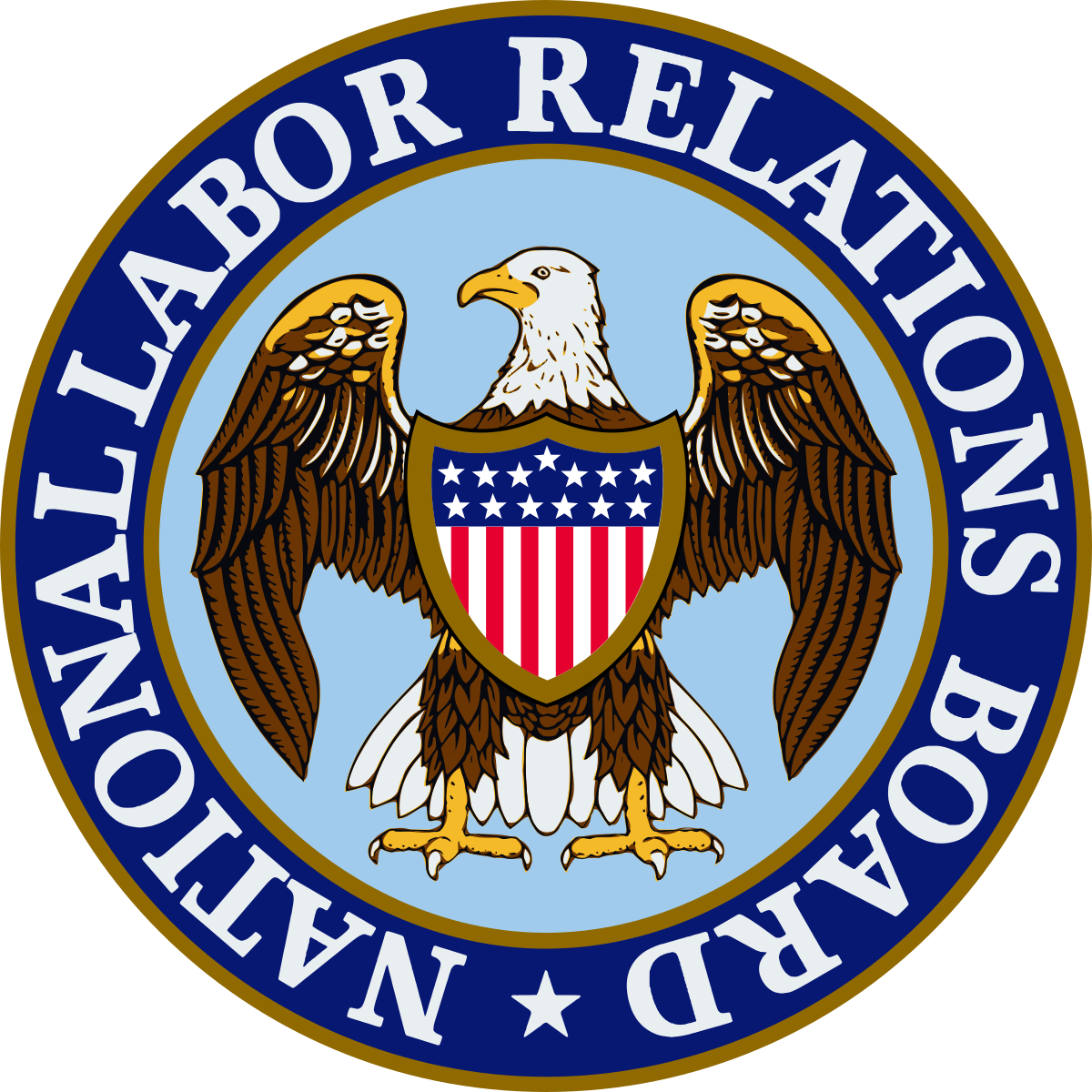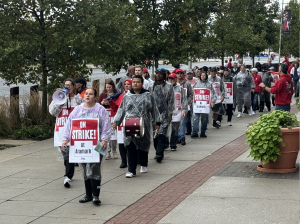Labor organizers agree that, when workers are on strike, anyone crossing a picket line demonstrates explicit support for employers and their policies. So, what constitutes crossing a picket line? How can you best stand in solidarity?
2022 saw an explosion of union organizing and collective action leading to some significant wins, namely at Amazon, Trader Joe’s, all 10 University of California campuses, REI, and Chipotle. According to the National Labor Relations Board, 270 Starbucks stores across the country voted to unionize, a win rate of 80%, all in spite of bosses closing unionized stores, firing union organizers, and filling stores with managers prior to union elections.
The Legality of Refusing to Cross a Picket Line
Some union workers, depending on their contract agreement, can avoid crossing a picket line by engaging in a sympathy strike; other contracts strictly forbid sympathy strikes. Under the National Labor Relations Act (NLRA), avoiding a picket line is acceptable if it can be considered an “abnormally dangerous” workspace — for instance, if picketers or line-crossers are threatened.
Additionally, if workers honor the picket line of an unfair labor practice (ULP) strike, they, in addition to the striking workers, cannot be fired or permanently replaced. It’s important to note that some employers can ban ULP strikes in contracts through clever language; however, some no-strike contracts ban stoppages and slowdowns but not sympathy strikes explicitly. It’s important to know the specifics of your contract. A strike that violates a no-strike provision is not protected by the NLRA, and the striking employees can be fired unless the strike is in protest of unfair labor practices.
Non-union workers can refuse to cross the picket line; however, without union representation, they can also face retaliation from their employers. Lastly, customers also have the right to honor the picket line and arguably have the most important role in influencing employers’ decisions, outside of the workers themselves.
Nursing Strikes
The last six years have seen some of the largest nurses’ strikes in decades. In 2017, 4,000 psychologists, therapists, social workers, and nurses from Minnesota Nurses Association went on strike for 38 days. On January 9, 2023, more than 7,000 nurses from two major New York hospitals went on strike to protest staffing shortages, unsafe conditions, and low pay.
Nurses’ strikes are unique within labor because unions and hospitals are required to provide a 10-day notice prior to a nursing strike in order to negotiate an agreement or plan to transfer patients and temporary staff to provide care.
That leads to the most significant difference between nursing strikes and corporate strikes: unlike corporations, hospitals cannot afford to close because patients require constant care. Thus temporary or travel workers, local registered nurses who are not currently employed or retired, and nurses from out of state keep the hospitals running.
So, are patients who go to the hospital for a medical emergency crossing the picket line? Absolutely not. Nurses don’t go on strike to harm or inhibit patients; nurses go on strike to improve their working conditions and better help their patients.
The best thing we can do as sympathetic workers is use the platforms we have to boost their cause and hold hospitals accountable for low wages and poor working conditions. In a recent Twitter post, user @NF4awesome, a patient waiting to receive care at Mount Sinai, sided with the striking nurses, stating
“My surgery this month was canceled due to the strike, but I support these nurses wholeheartedly. I am, though, completely pissed at the hospital for ignoring their needs for so long it came to this.”
He went on to add:
“I’m gonna need @MountSinaiNYC to stop screwing over nurses and get my surgery back on the schedule, or pay me for missed shifts I already took off.”
Honoring the Picket Line for Corporate Workers
In the context of conventional strikes against a corporation, the conditions are less stringent. In the case of any strike, it’s crucial to consider the needs of workers. Boycotts, while galvanizing, are not necessarily the best way to help workers. There are other, hands-on ways you can help.
For Starbucks workers, solidarity can come in the form of union-coordinated “sip-ins”: protests in which customers are encouraged to grab a free cup of water and tip the workers. For the die-hard coffee drinkers out there, try different local coffee shops. Do you really need the venti mocha frappuccino? Inconvenient sacrifices on behalf of workers, that is what solidarity looks like.
Another way customers can support picket lines is by showing up and contributing. Walk the picket line with striking workers, ask questions, make signs in support of the strike, bring food and water that can be shared, hand out fliers, and contact unions about fundraising.
These simple, yet impactful contributions can go a long way in supporting picket lines. It’s additionally important to follow unions and similar labor organizations on social media to keep up to date on ongoing strikes and campaigns. Some useful sources include @MorePerfectUS; @VentiSolidarity; @CWAUnion; @strikewave, a nonprofit news organization that reports daily on worker movements; @railroadworkers; @SWA_solidarity; @amazonlabor; and @ILRLaborAction, a labor action tracker account that posts real-time picket line updates. Plus, you can sign up for EWOC’s own newsletter.
No Choice
Sometimes there isn’t much of a choice. Sometimes members of different unions can’t cross without risking retaliation from their employers. However, even under these dire conditions, there are still ways you can show solidarity. Some suggest moving work to another site, if possible; others recommend wearing an armband of a particular color to show that you are crossing only because you have to, but that you’re still in support of the strike. And of course, you can always join picket lines when you aren’t working and donate to strike funds. There are always opportunities to show solidarity with a picket line, even when you’re forced to cross it.
Whether you’re a customer hoping to make a difference or a sympathetic worker, the motto rings true: Solidarity forever!





